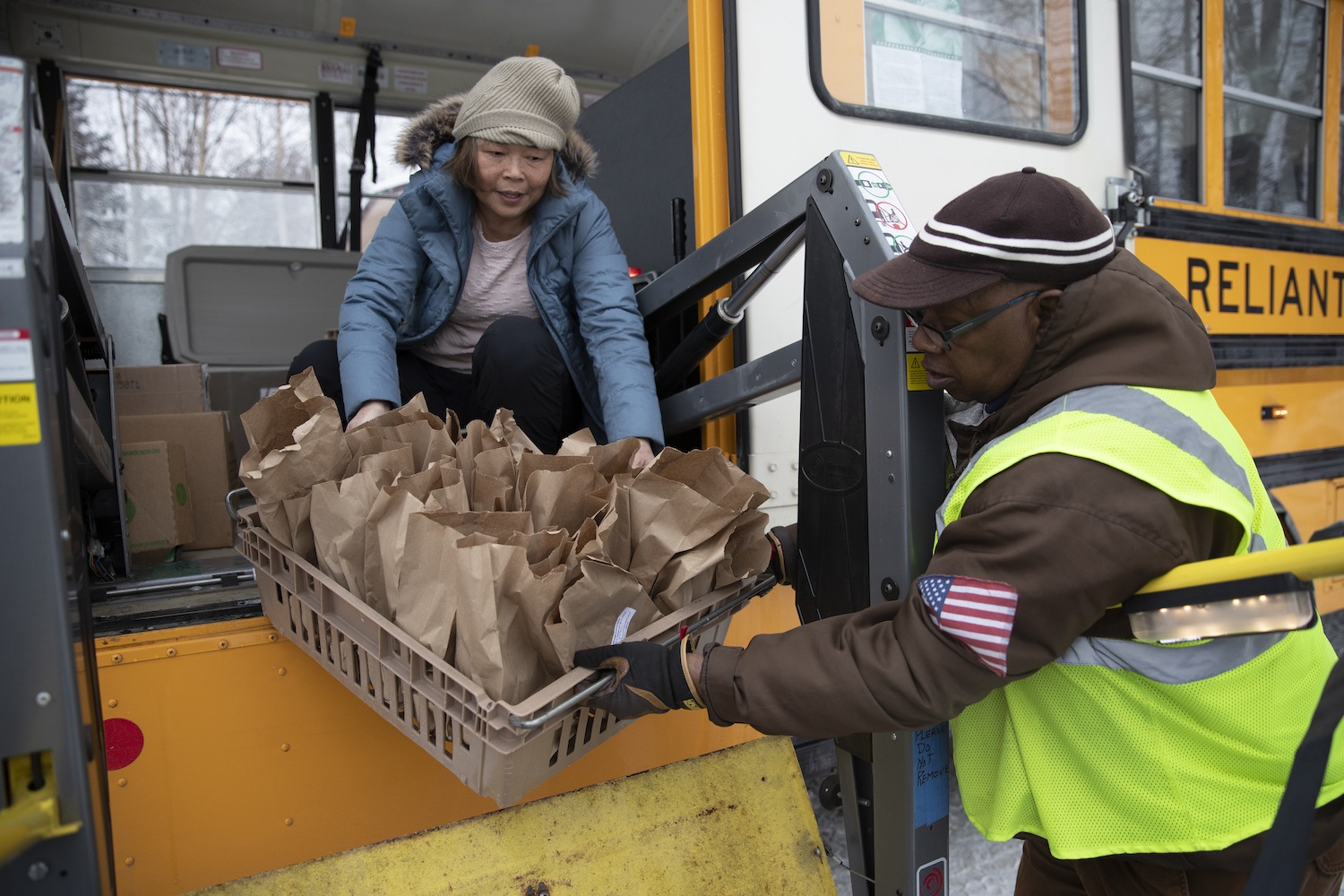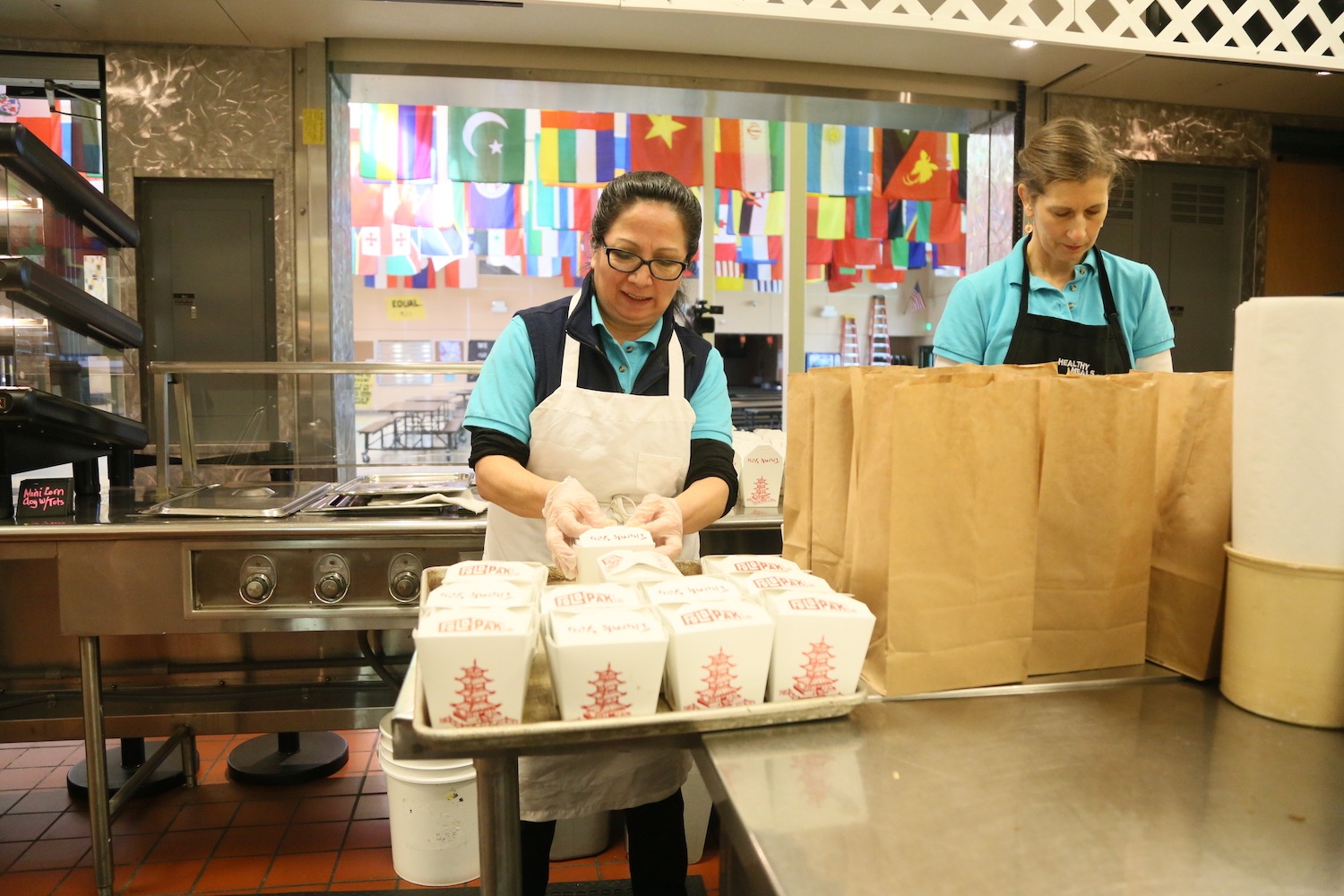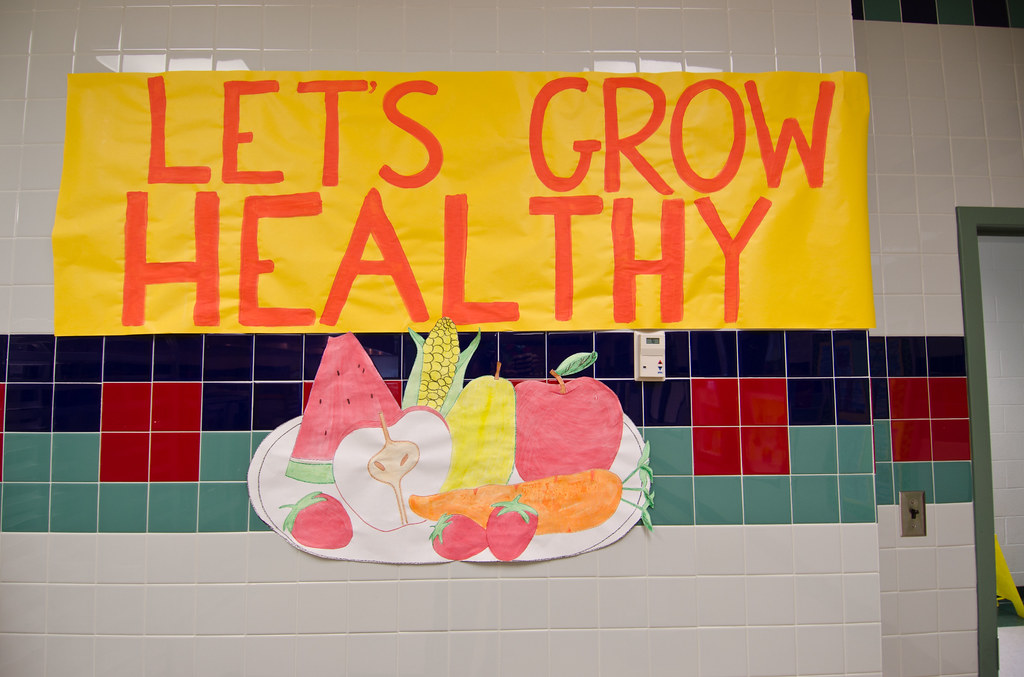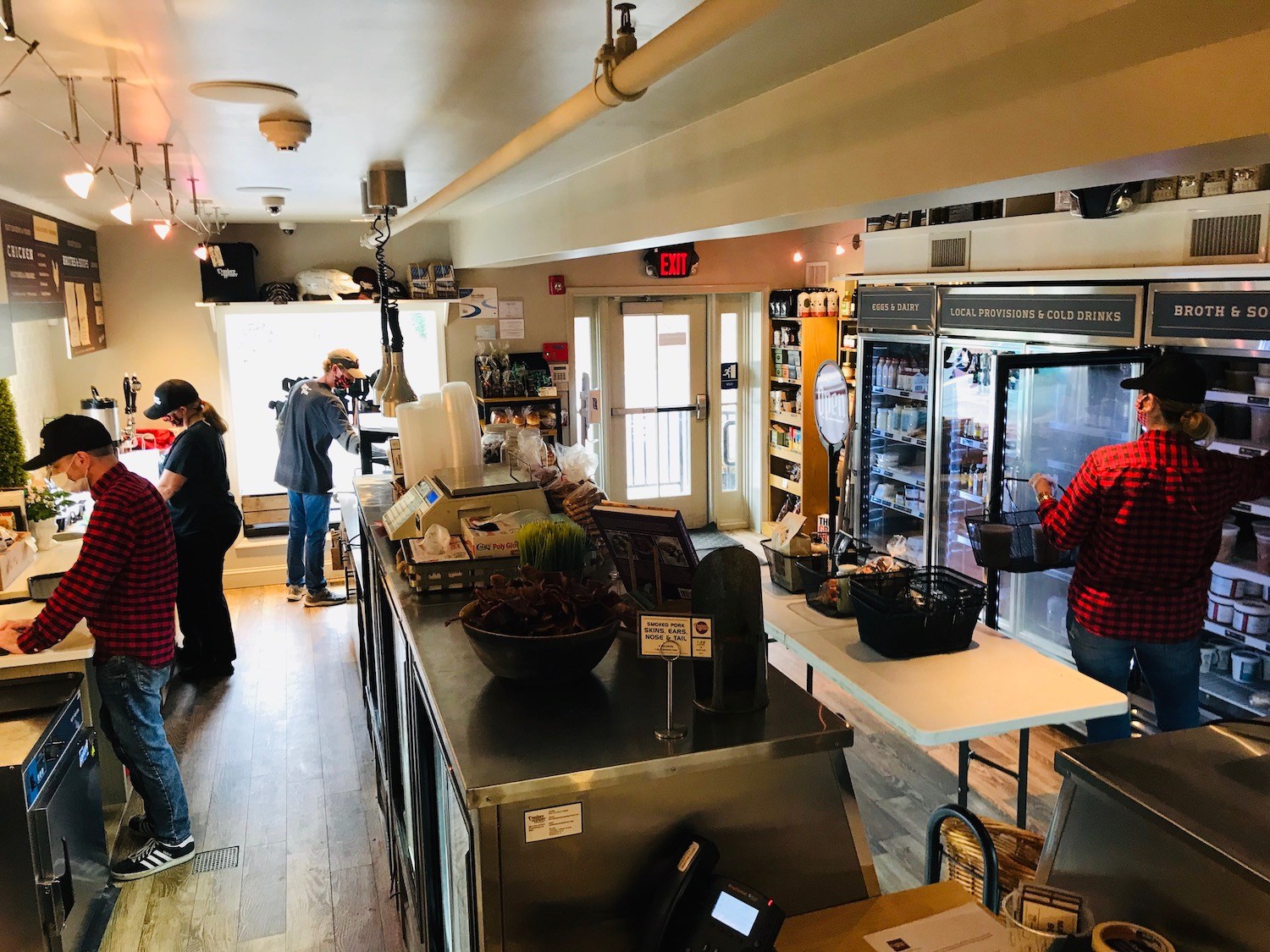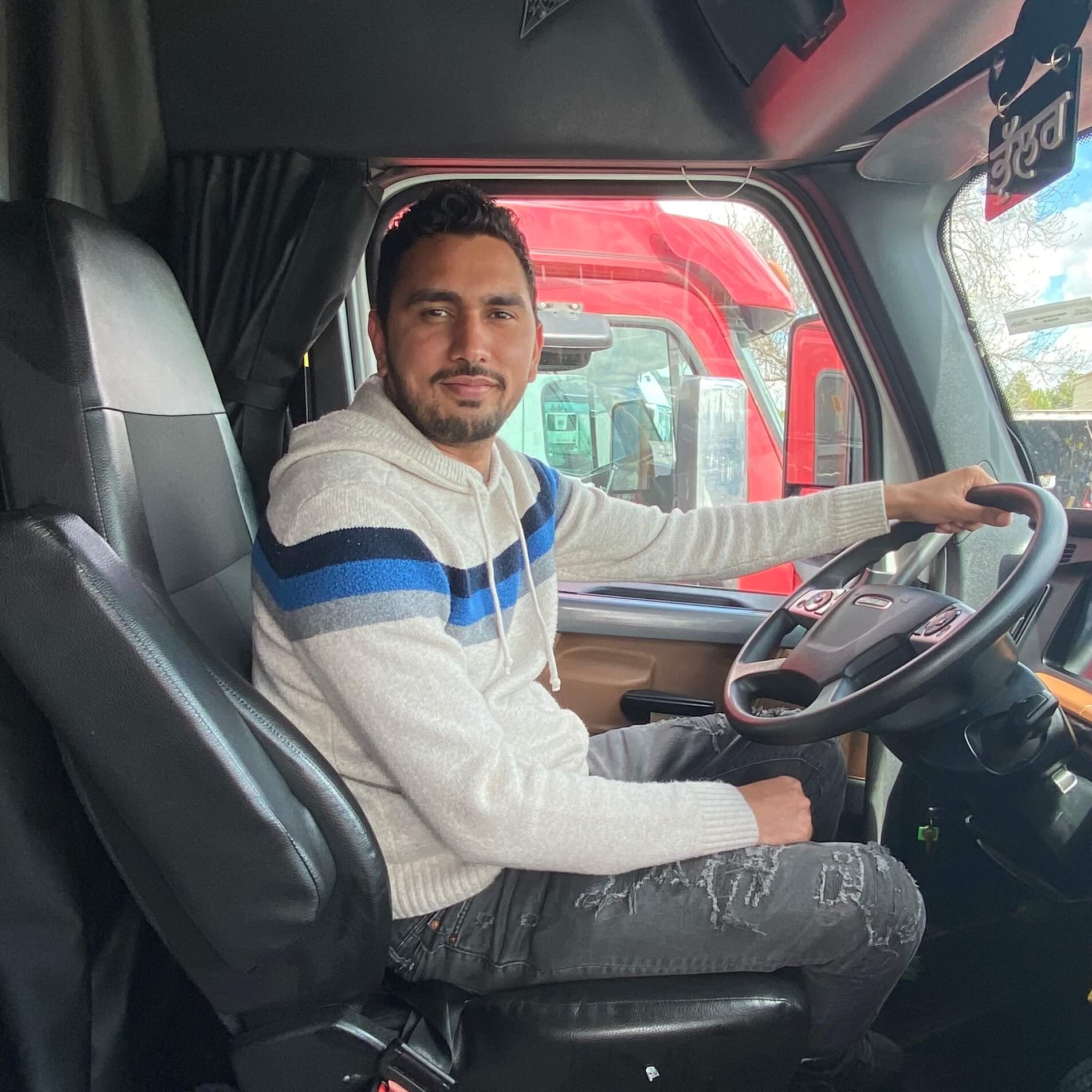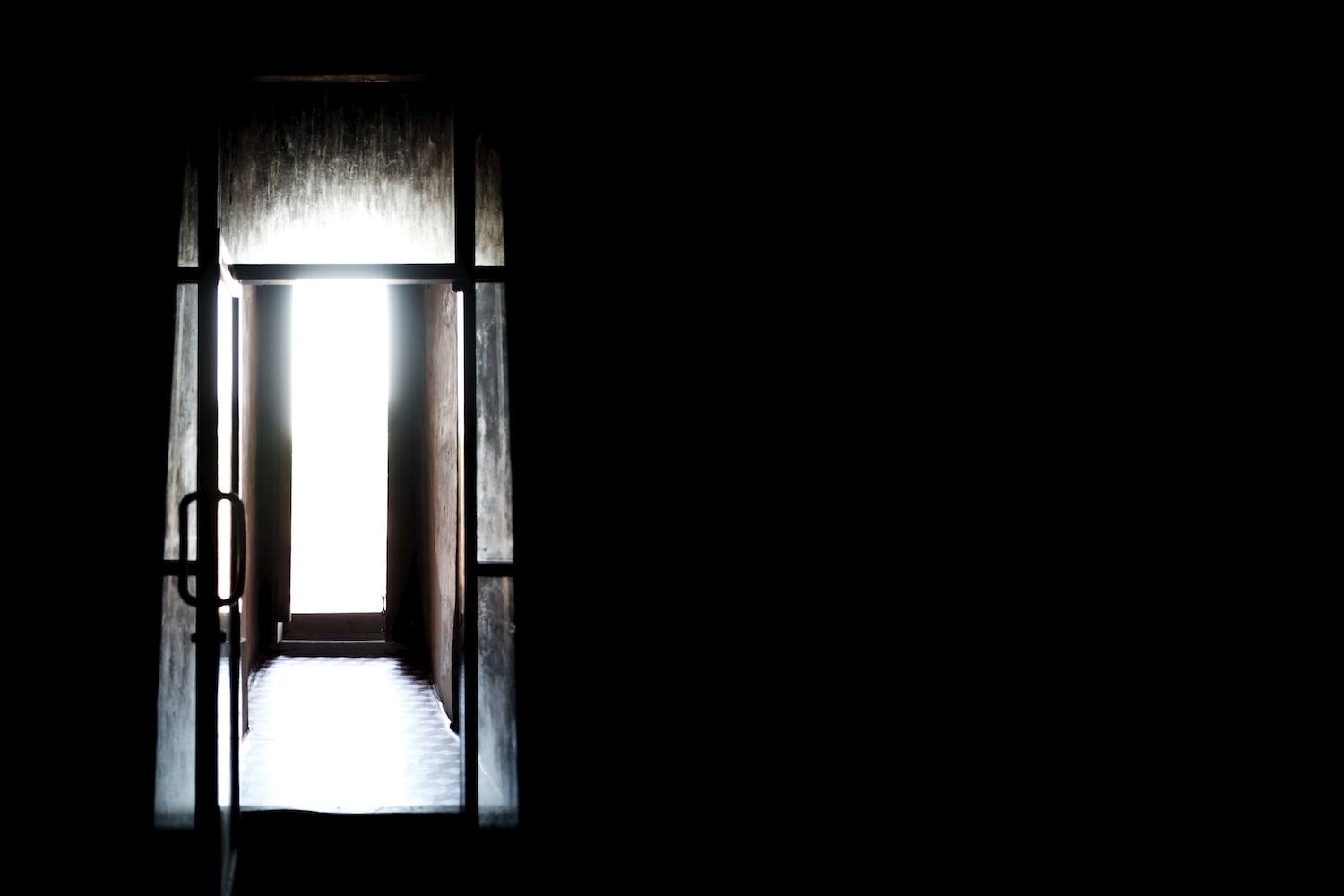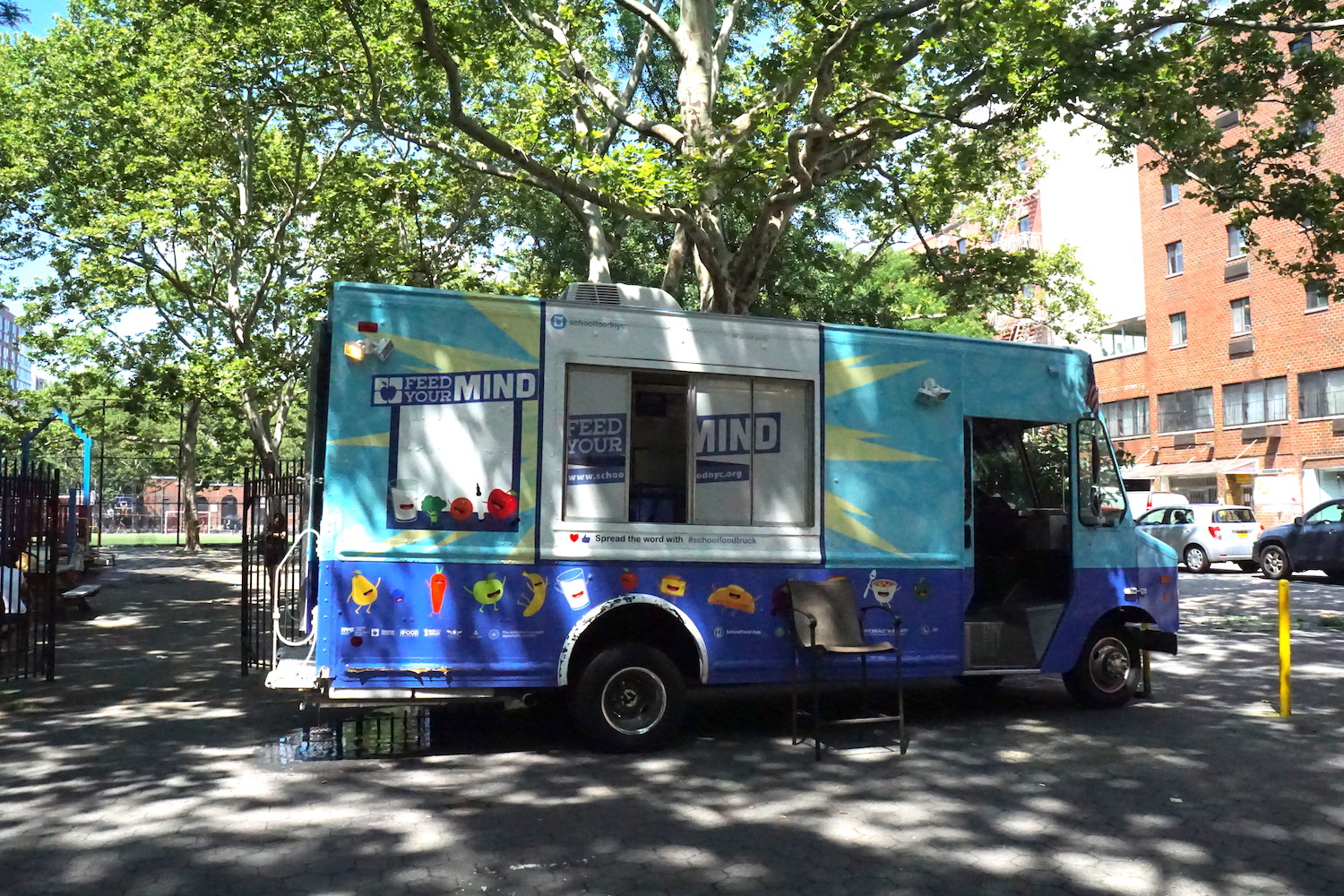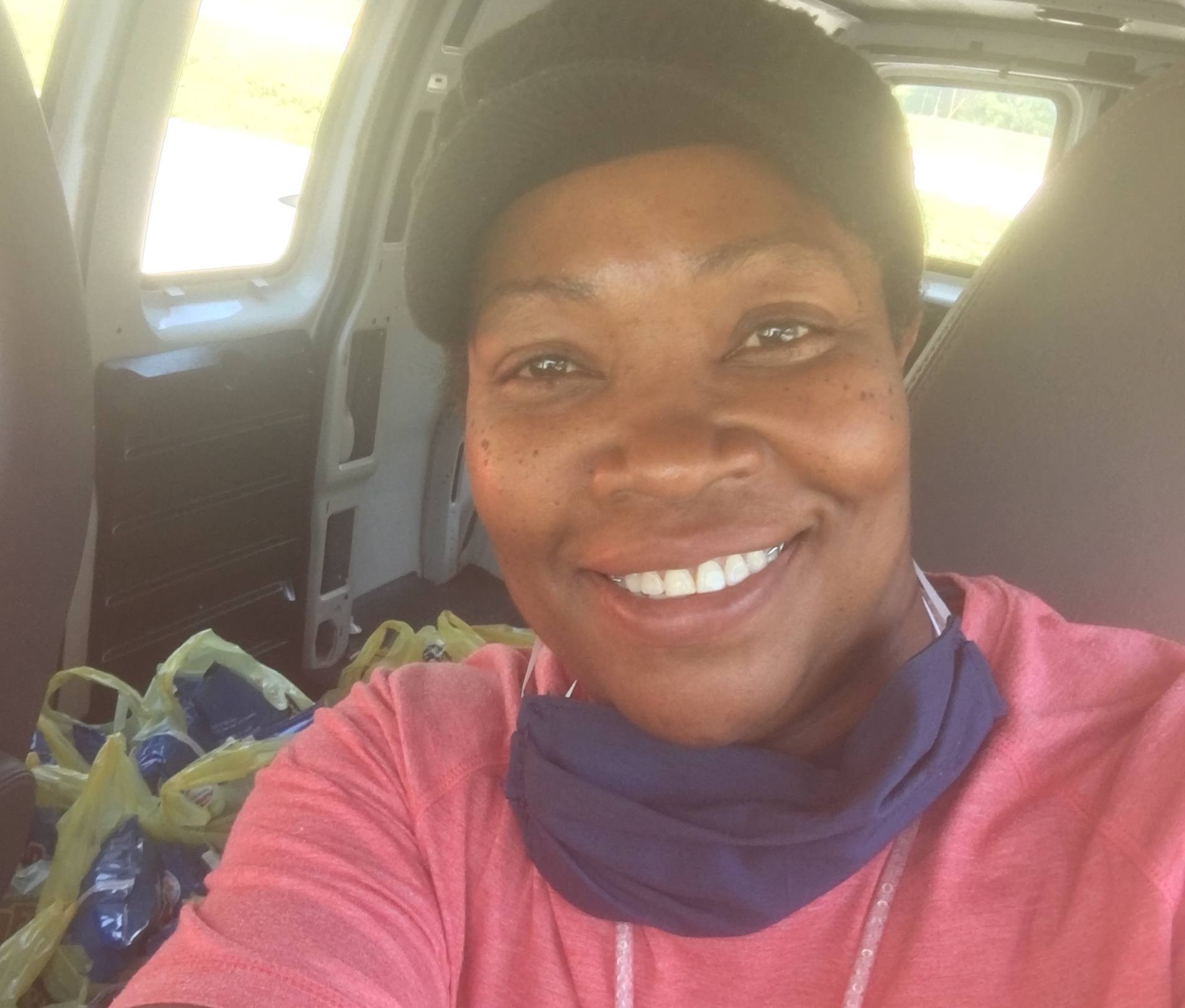
Vanessa Hayes
School lunch are a resource, just like textbooks and computers. Like everyone else, we’ve had to change some things about them.
Vanessa Hayes, 51, is a school nutrition director in Tift County, Georgia, a rural school district of 8,000 students, all of whom are eligible for free breakfast and lunch.
Even though the county’s schools have closed their doors to students, operations are still running. Like other school administrators who have had to improvise new food distribution procedures almost overnight, Hayes has transformed her free meal program into a sprawling network of grab-and-go lunch lines and coordinated meal drop-offs. To do that, she’s roped in parents, teacher volunteers, security officers, and idled school bus drivers. Besides setting up outside of elementary schools, she’s also distributing free meals to families at parks and churches in their neighborhoods.
Hayes talked to me on the phone about those adjustments. It’s not just that she’s taking meals out of schools and into communities, complex as that is. She’s also had to change what she serves, forgoing barbecue and meatloaf for sandwiches and cold salads. The job is lonelier, she says—a marked change from the chatter and bustle of the lunch room.
—Sam Bloch
—
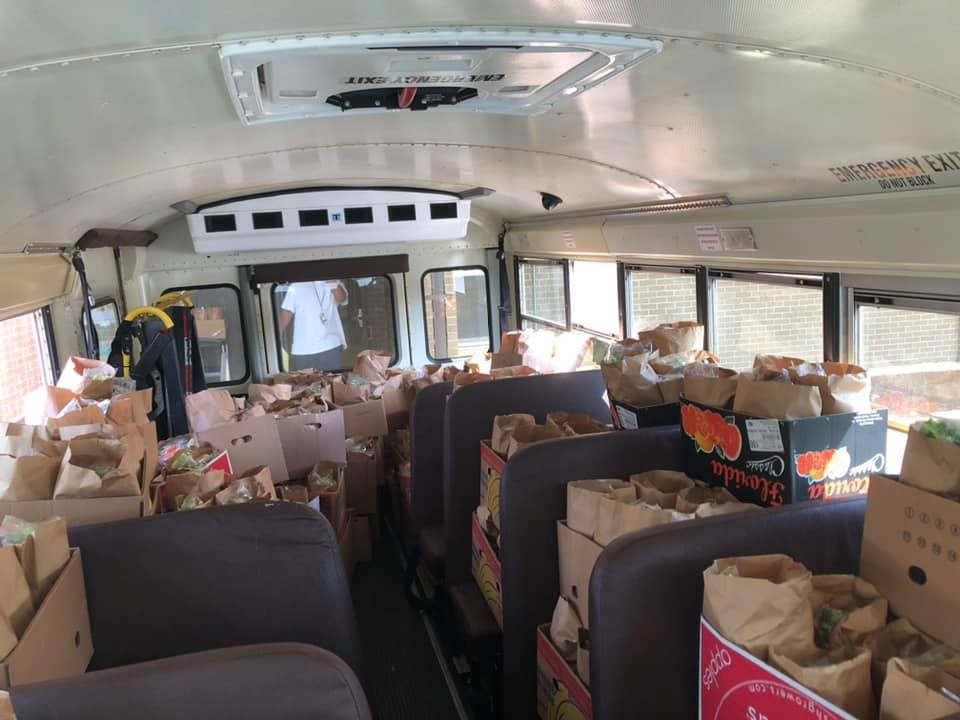
School bus routes drive across the county to find kids who need meals. Volunteers set the meals at sites where a bus could stop, put the meals out, let the kids pick up their bags, strike them off the list, and then drive off.
Vanessa Hayes
Vanessa Hayes: Before the pandemic hit, my job was very regimented. We had rotating menus that were standardized and priced out and analyzed for nutrition. For the most part, we fed the same amount of students every day, the same way. It was all very certain. But we do not have the luxury of just doing our jobs any more. That comfort zone has been taken away. Our kids are not in our buildings. So now we have to bring the food to them. We’re having to partner with all these different departments. That’s the bus drivers, principals, central office staff, the parents, the teachers and volunteers. We’ve got more people involved in what we’re doing now than ever before.
We’ve set up drive-ups at five elementary schools in the areas where my kids are most in need, plus at parks and housing projects. The church on Tift Avenue, on the north side of town, which services kids who don’t have internet, also partnered with us to provide meals for kids who come up in their cars to sit and download their assignments. There are volunteers handing out meals out front. They have on gloves, and now they’re wearing masks, which I’m against, but we do it. When students come up to them, there’s a barrier of three tables between them, and there’s a big sign: No hugging, no touching. We also have a cart that we put food on, and roll up to cars, where they can reach over and grab it. It sounds cold, but it’s necessary. We have to be safe or we’re going to be sorry.
And we have bus routes to go find kids everywhere—at sites where a bus could stop, put the meals out, let the kids pick up their bags, strike them off the list, and then drive off. Because we don’t want them congregating. There’s one person who opens the door, and asks how many, or sees five kids standing there, and puts down five bags and drives off. It’s almost like an ice cream truck. If we had a bus with a window and a ledge, that’s exactly what we would do.
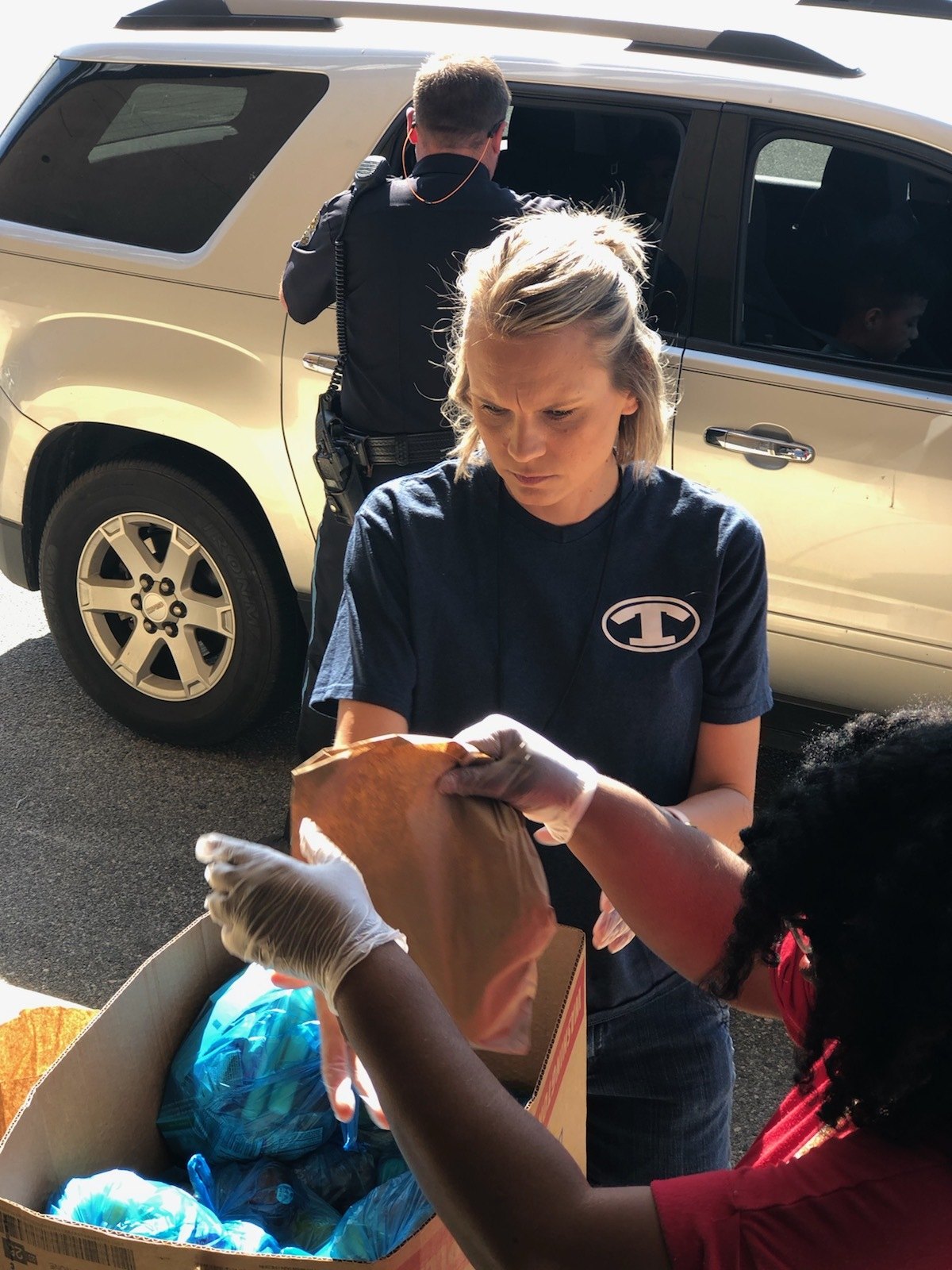
Vanessa Hayes
Tift County, Georgia, distributes sack lunches instead of hot meals, because they don’t have a way of keeping the quality of the food by the time the children get them.
The thing is, school is still in session. Our kids are still in contact with their teachers. They still have requirements for completing assignments. We are a resource in schools, just like a textbook, like a computer, or like a tablet. So if school meals are resources, then we’re present. School is in. So is food. But we have had to change things. My staff has to work alone, and condense six hours of work down to two. My sandwich makers put meat in between the buns and wrap it—that’s it. They do one thing, the same thing, every day. They have their own table, and they don’t touch anyone else. And they’re not used to that. Us school nutritionists, we’re very social, loving, and touchy. So social distancing is difficult for me.
I’m a chef by trade. But I could be doing a much better job of serving my kids now, and use less labor, if I could serve pre-packaged stuff. The problem is that those items—like frozen burritos and frozen pizzas—weren’t on my bid. I didn’t order them at the beginning of the year when I was designing my menus. So it doesn’t matter that I’m in an emergency feeding situation now. I have to use what’s on my bid.
We used to serve a lot of salads, fruits and veggies, and hot foods—barbecue, meatloaf, cheeseburgers, casseroles, and biscuits. But I can’t offer that now. I don’t have time to cook biscuits. I don’t have storage. I don’t have a way of keeping the quality by the time my kids get them. Instead of hot lunches, now it’s sack lunches. It’s almost like—if you’ve ever seen Morrison’s blue plate specials, where you could walk up, and tell them what you want, and it’s all hot food. Versus a Honey Baked Ham, where you go in, and get a sandwich with a cold pasta. Does that make sense? I’m used to offering Morrison’s-quality presentation and food. And now I have to do Honey Baked Ham.
It doesn’t matter that I’m in an emergency feeding situation now. I have to use what’s on my bid.
We want to keep giving our kids vegetables. But don’t tell me I’ve got to do a legume. Imagine serving cold beans to a kid. How do I do that? I’m doing Southern caviar, which is a black-eyed pea salad—which our kids don’t want. We have to serve a starchy vegetable—what do I serve cold in that group? Normally, that’s corn, potatoes, and french fries. So I’m making a corn salad—and my kids don’t want that. If I could just give them pre-packaged veggies that they could eat now or later, cooked or cold, that would be more versatile.
We will never go back to what we thought was normal. Because we just won’t be. Knowing this could happen any time—whether it’s a hurricane, or a tornado, a pandemic—I have to be ready. I’ll be a better steward over what I’m bringing into my buildings and what’s on my bids. And I will say, this has elevated my ability to do grab-and-go. I don’t think anybody will ever tell me that they don’t want me doing breakfast in the classroom or in the hall. Because if we can do it on the streets, and on buses, and in the park, we can do it in a hallway. All those worries are gone.


